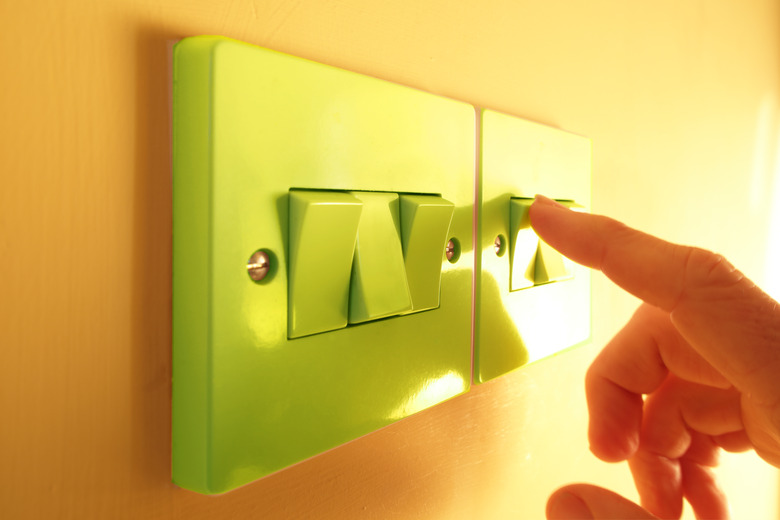How To Wire A 3-Way Light Switch
You've probably seen a pair of three-way switches before, perhaps in a stairwell or a long hallway. Three-way switches always come in pairs, and they always control a single circuit on which there is usually a light. If you're wondering why they aren't called two-way switches, they are called that in some places but not in North America.
Each switch in a three-way pair is actually a single-pole double-throw switch, and the reason for calling it a three-way is a little mysterious, even for electricians. One explanation could be that there are three ways electricity can travel through the circuit. If the first switch is closed, the electricity stops there. If it's open, electricity can pass that switch and travel to the next one, but if that switch is closed, the electricity stops again. A third possibility is that both switches are open. Electricity can then travel to the light, and the light goes on.
Consult a Three-Way Switch Diagram
Consult a Three-Way Switch Diagram
A three-way switch system works in more than one configuration, but the actual wiring may differ, depending on where power comes into the circuit. The power could come through one of the switches, or it could come through the fixture itself and then to the switches. These instructions are for a circuit in which the power comes through one of the switches. If you have to wire a circuit that has power coming through the fixture, it helps to consult a diagram for that type of circuit, which you can find online. A diagram is also helpful when you have to do three-way switch troubleshooting.
Setting Up a Three-Way Circuit
Setting Up a Three-Way Circuit
When wiring a three-way system to power a light fixture, a common configuration has a two-conductor power cable coming to one of the switches. From there, a second two-conductor cable goes to the light fixture, and a three-conductor cable with a red hot wire goes to the second switch. The cables for the entire circuit should all be the same size, preferably 12-gauge. Each of the three-way switches has four terminal screws. Two are brass hot connections, one is black for the traveler and one is green for ground. After you've run the cables, turned off the breaker for the circuit and tested the wires to make sure they are dead, you can do the three-way switch wiring.
Wiring a Three-Way Light Switch Circuit
Wiring a Three-Way Light Switch Circuit
Start wiring in the first switch box. The black wire from the live power cable goes on one of the brass terminals on the first three-way switch. To connect the other terminal to the second switch, use the white wire from the three-conductor cable. Be sure to mark it with black paint to identify it as a hot wire before connecting it to the other brass terminal. The red wire from the three-conductor cable goes on the black terminal. Splice and cap the two remaining black wires in the box to provide a path from the light fixture to the second switch. In the same way, splice and cap the two remaining white wires. Twist together the three bare ground wires and connect them to the green ground terminal.
Move on to the second switch, where you'll find only the three-conductor cable in the box. Connect the black wire to one brass terminal, the white-marked-black wire to the other brass terminal, the red wire to the black traveler terminal and the ground wire to the ground terminal.
Finish the wiring job at the light fixture by connecting the black wire to the black hot wire on the fixture, the white wire to the white neutral wire and the ground wire to the ground terminal.
